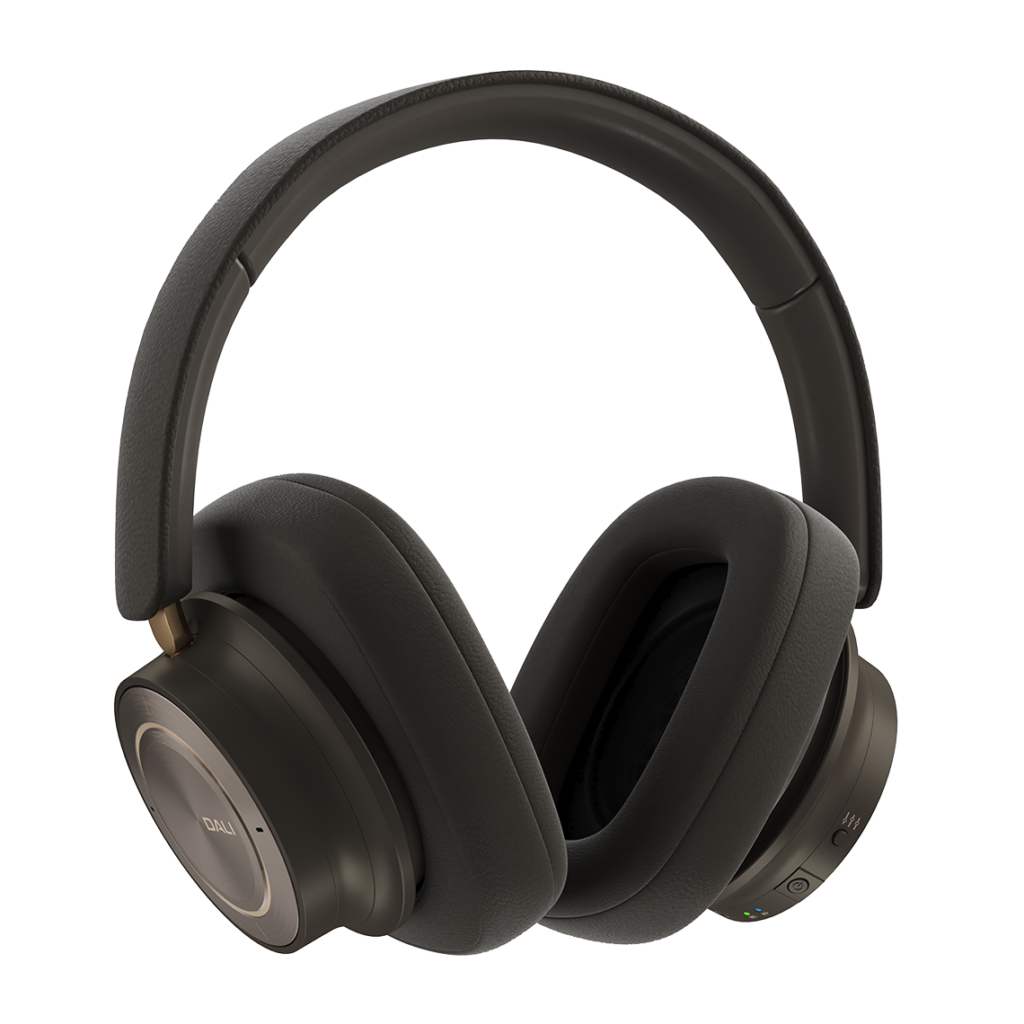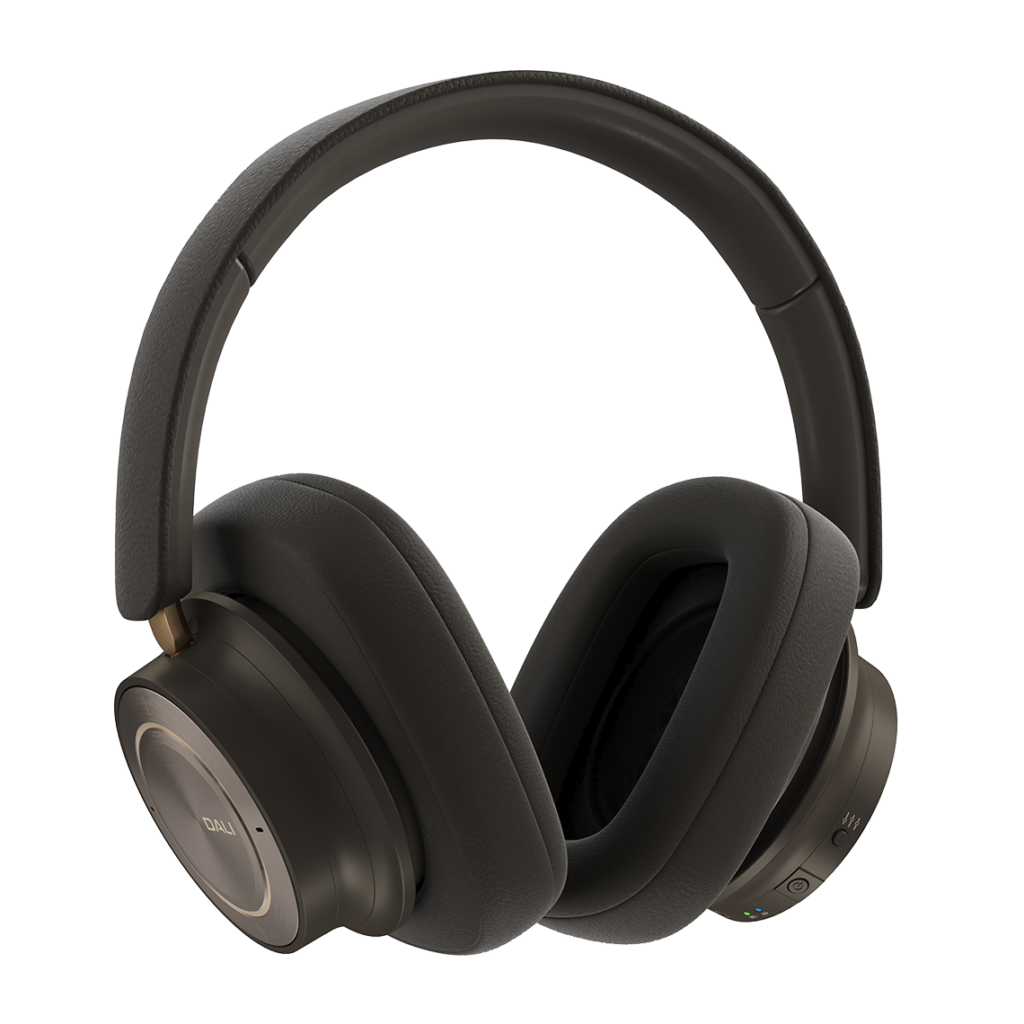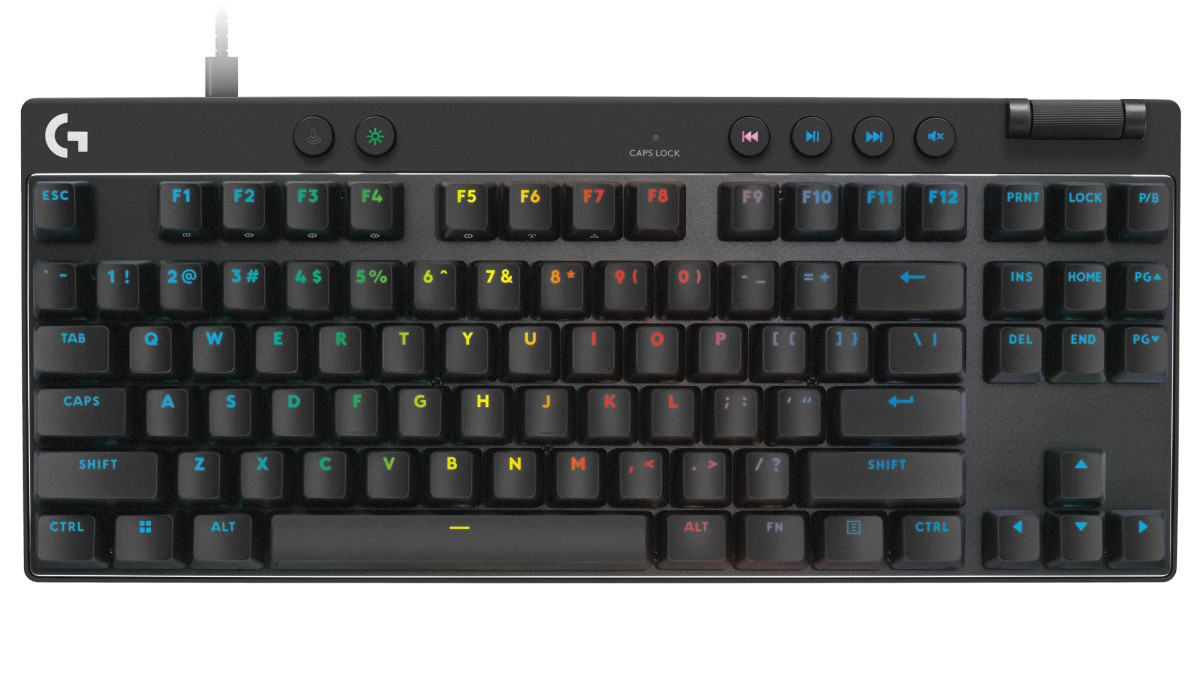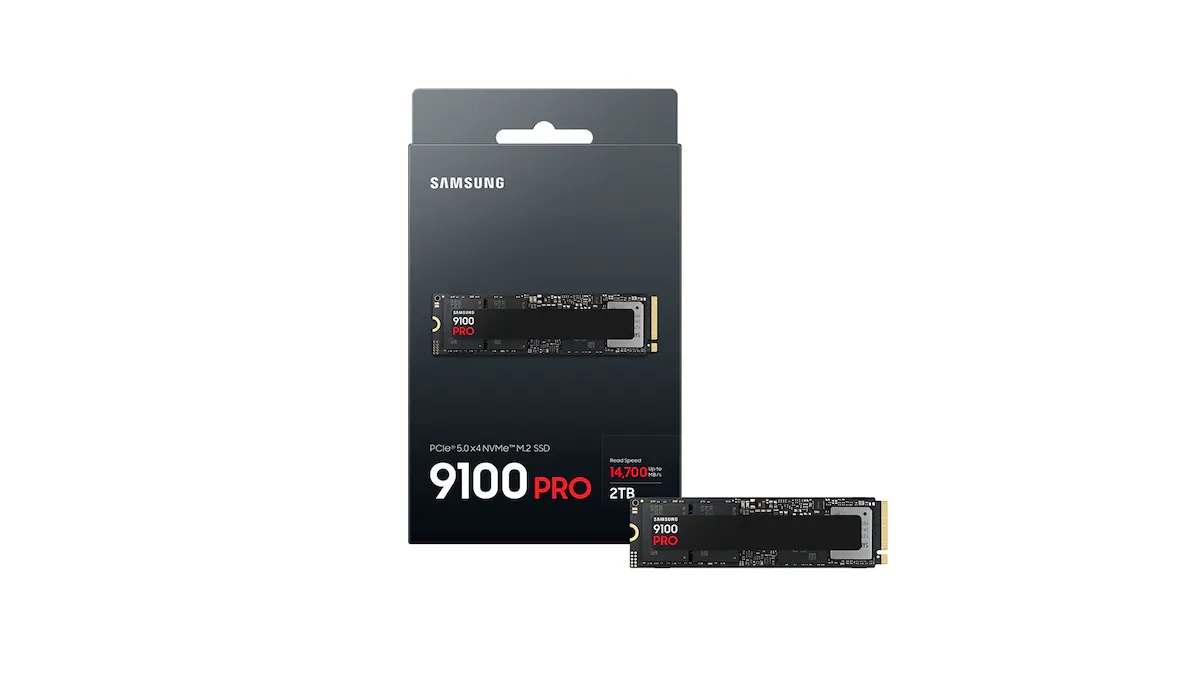Examining the Dali iO-12 headphones reveals a stunning blend of aesthetics and connectivity, featuring 3.5mm and USB-C wired audio options, ensuring compatibility even for iPhone 15 users. Additionally, you can enjoy high-quality 24-bit/96kHz resolution or aptX Adaptive sound wirelessly.
The chocolate finish, complemented by gold accents and luxurious padding, presents an alluring appearance. Remarkably, the audio is both detailed and insightful, whether you opt for the bass boost or unadulterated listening, and the ANC functionality proves surprisingly effective. However, it’s worth noting that these headphones lack any in-app customization options.
Is the absence of an app a concern for you? The decision ultimately lies in your preferences.
Pros:
- Impeccable, revealing, and detailed sound
- Elegant craftsmanship and finish
- USB-C wired audio option
Cons:
- Absence of a companion app
- Lack of spatial audio processing
- The headband occasionally slips back
DALI iO-12: Quick Overview
The Dali iO-12 headphones are a visual delight, making them one of the top three designs I’ve ever seen. They exude a luxurious appearance that tempts you to take a bite or dunk them into something indulgent. Not only do they impress aesthetically, but they also offer aptX Adaptive and 24-bit/96kHz resolution via USB-C, catering to both style and substance.
While the inclusion of a USB-C port for high-res audio passthrough is a notable feature, what truly sets these headphones apart is the sense of pride they evoke when worn. They look and sound expensive, making them a premium choice.
Despite the absence of features like spatial audio, customizable controls, EQ adjustments (except for the bass boost button), sound zones, speak-to-chat, and adjustable ANC, these headphones still stand out as exceptional noise-cancellers. The primary goal of noise-canceling headphones is to live up to their name, and the Dali iO-12 accomplishes this admirably, delivering excellent audio quality.
I’m not surprised by this performance, as Dali’s reputation has traditionally focused on speakers. I’ve previously reviewed Dali’s wireless over-ear headphones, the iO-6, and iO-4, which were exceptional in detail and finesse, with the only drawback being a slightly reserved delivery.
Dali has added a bass boost button to address this in the iO-12. While I’m not particularly fond of it, the hi-fi sound profile compensates for it. Additionally, the new patented Soft Magnetic Compound (SMC) magnet system is worth discussing, as it’s truly innovative.
The ear pads on the latest model are larger than previous iterations and well-padded. However, these are substantial over-ear headphones that may overwhelm smaller wearers or lead to overheating for those prone to warm ears. They are perfect for the cooler seasons but not the lightest at 370g.
In summary, the Dali iO-12 offers a simple yet high-quality, hi-fi listening experience with a sophisticated aesthetic. However, if you seek a feature-rich, app-enhanced experience, there are more budget-friendly alternatives like the Sony WH-1000XM5, Bose QuietComfort Ultra Headphones, or Bowers & Wilkins Px8.
Remember, quality often comes at a premium price.
DALI IO-12 REVIEW: PRICE & RELEASE DATE
| Release Date | May 18, 2023 |
|---|---|
| Price | $1,499 / £999 (around AU$1,870) |
The Dali iO-12 headphones made their debut at the esteemed High-End Munich hi-fi trade show in May 2023. These headphones fall squarely in the high-end category, making a considerable dent in your wallet. They surpass premium options like Focal Bathys ($799 / £699 / €799, approximately AU$1,210) and Bowers & Wilkins PX8 ($699 / £599 / AU$1,150) in terms of cost.
While they don’t reach the steep heights of the wired Meze Audio Liric ($1,999 / £1,799 / AU$3,399), they still stand four to five times the price of many competitive alternatives. Take, for instance, the Shure Aonic 50 Gen 2 ($349 / £349 / around AU$540), Sony WH-1000XM5 ($399 / £380 / AU$649), Bowers & Wilkins PX7 S2 ($399 / £379 / approximately AU$575), Edifier Stax Spirit S3 ($399 / £330 / approximately AU$640), or the Sennheiser Momentum 4 Wireless ($349.95 / £300 / AU$549.95) as examples.
It’s worth noting that all the options mentioned above, except the Dali iO-12, offer a companion app. With this premium price tag, expectations for performance are understandably high.
DALI IO-12 REVIEW: SPECS
- Drivers: 50mm dynamic with patented distortion-eliminating SMC magnet technology
- Active noise cancellation: Yes
- Battery life: 35 hours
- Weight: 370g
- Connectivity: aptX Adaptive; USB-C wired audio
- Frequency range: Not specified
- Waterproofing: No
- Other features: USB-A to USB-C and 3.5mm cables supplied, bass boost button
DALI IO-12 REVIEW: FEATURES
| Feature | Details |
|---|---|
| New Bass/Hi-Fi button | A button on the right earcup lets you switch between “bass” and “hi-fi” sound profiles. |
| USB Audio Resolution | Supports up to 24-bit/96kHz audio resolution. |
| Active Noise Cancellation (ANC) | Offers excellent ANC performance, though not as feature-rich as some competitors. |
Let’s begin with battery life; 35 hours is commendable. It surpasses the 30-hour mark set by Bowers & Wilkins PX8. However, it falls short of the Shure Aonic 50 Gen 2 with 45 hours or the 80 hours of Edifier Stax Spirit S3, but the latter lacks ANC.
Multipoint connectivity is present, with controls located on the right earcup. Adjusting volume, playback, and ANC profiles is smooth. However, I occasionally turned them off by mistake, due to the ANC button’s location further forward.
These physical buttons lack customization options, unlike some competitors that allow changes for single or double presses. You won’t find features like sidetone, EQ profiles, auto-pause settings, sound zones, or vocal notifications customization here.
Regrettably, there’s no companion app, leaving you without the ability to fine-tune your audio experience. This omission may disappoint users familiar with sound zones or customizable EQ profiles.
A new EQ button on the right earcup toggles between “bass” and “hi-fi” modes. The bass booster enhances the lower frequencies but slightly masks other frequencies, favoring the hi-fi profile for a refined sound.
On the bright side, the noise cancellation is impressive, creating a peaceful cocoon of silence when activated. However, you can’t adjust the ANC levels as you can with Bose Noise Cancelling Headphones 700.
DALI IO-12 REVIEW: SOUND QUALITY
- Sound Profile: Offers neutral, revealing separation, and exceptional clarity.
- Treble: Particularly impressive, providing insight and agility.
- Comparison: Can be outdone for sheer enjoyment, but only slightly.
What I appreciate about larger over-ear headphones is the immersive sound experience they deliver, and the Dali iO-12 excels in this regard. Listening to Yngwie Malmsteen’s “Far Beyond the Sun” in FLAC format on Tidal, the cymbals and keys gained newfound direction and clarity, while the guitar took center stage.
On My Chemical Romance’s “To the End,” whispered backing vocals danced beneath each ear, guitar crashes on the left, and the melody on the right. Gerard Way’s vocals struck the perfect balance, creating a musically pleasing blend across the frequency spectrum.
Switching to Joni Mitchell’s “Blue” on Apple Music, the key progressions became three-dimensional, offering an emotionally moving experience. Every element in my playlist received careful attention, with strummed guitar chords in my right ear, rhythm in the left, and Mitchell’s expressive vocals up front and center. The sparkling treble added an extra layer of depth to the listening experience.
Dali’s iO-12 headphones deliver an immersive, dynamically agile listening experience without relying on gimmicks. It’s a choice fit for those who value precision and neutrality.
Some may desire a touch more excitement, a bit of extra bass punch, or a cheeky rise and fall. For such preferences, brands like Bose or JBL provide minor audio enhancements. However, I prefer the insight, detail, neutrality, and precision of the Dali iO-12’s hi-fi profile.
DALI IO-12 REVIEW: DESIGN
- Port Placement: USB on the right earcup, 3.5mm jack on the left.
- Non-foldable: Flat-laying design but doesn’t fold for compact storage.
- Large Earcups and Pads: Offers generous cushioning and substantial earcup size.
Dali introduces a groundbreaking feature with the iO-12—the world’s first headphones to incorporate the Soft Magnetic Compound (SMC) magnet system, drawn from their high-end speakers. SMC technology reduces hysteresis, a source of audio distortion, enhancing sound quality remarkably.
While these headphones don’t fold for ultra-portability like the Sennheiser Momentum 4 Wireless or Focal Bathys, they can lie flat without any noisy clicking during adjustment. The square hard-shell case, however, is quite sizeable and not discreet for casual bag storage.
The build showcases a remarkable blend of aesthetics, with real leather elements and ample padding on the rectangular pads attached to the circular earcups. Their substantial size contributes to a spacious sound field, but they can occasionally slip on your head due to their sheer bulk.
These headphones make a bold statement with metallic circular accents, catching the light beautifully and earning compliments. The placement of physical buttons on one earcup is practical for right-handed users but may pose some challenges for lefties or those with larger fingers.
The dual-wired input options on each earpiece (USB-C on the right, 3.5mm jack on the left) might seem unusual, but it’s a minor detail. The included fabric-covered cables are of high quality and tangle-resistant.
Sound leakage is minimal, although there’s no official water resistance rating, so caution is advisable in heavy rain, especially considering the price point.
Weighing in at 370g, they share a weight range similar to Apple’s AirPods Max (384g), distributing it comfortably with clamping force. In comparison, Sony’s WH-1000XM5 is notably lighter at 249g, making the Dali iO-12 headphones feel more substantial.
DALI IO-12 REVIEW: VALUE
- Premium Package: Exquisite design and sound, but comes with a premium price tag.
- Flexible Connectivity: USB-C audio option for high-resolution sound.
- App Absence: Notably lacking app support, a feature found in more affordable alternatives.
Undeniably, these headphones come at a steep price. However, they excel in delivering exceptional sound quality and effective ANC.
Suppose you seek a headphone that offers customizable transparency profiles, EQ presets, button adjustments, spatial audio, and advanced features. In that case, you might want to explore alternatives like the Sennheiser Momentum 4 Wireless, Bose QuietComfort Ultra Headphones, or Sony WH-1000XM5.
Headphone purchases often involve trade-offs, and in this case, the compromise is the absence of an app and smart features. Dali advertises “No app required” as a feature, but it’s a point of contention.
The 35-hour battery life, stunning build quality, and highly detailed sound make the iO-12 a valuable choice. However, if you crave a bit more punch, alternatives like Bose might be more appealing.
SHOULD I BUY THE DALI IO-12?
Buy them if:
- You prefer a hassle-free music experience with physical buttons.
- USB-C hi-res audio is a priority, offering up to 24-bit/96kHz quality.
- Luxurious aesthetics and a premium feel appeal to you.
Don’t buy them if:
- Customization is crucial; consider Bose, Denon, or Sony.
- Portability is a top concern, as the headphones and case are sizeable.
- If you have a smaller head or are prone to overheated ears; these headphones are large and well-padded.
DALI IO-12: ALSO CONSIDER
| Model | Price | Drivers | Active Noise Cancellation | Battery Life | Weight | Connectivity | Frequency Range | Waterproofing |
|---|---|---|---|---|---|---|---|---|
| Dali iO-12 | $1,499 / £999 / AU$1,870 | 50mm with SMC magnet technology | Yes | 35 hours | Not stated | Bluetooth 5.2, aptX Adaptive, USB audio up to 24-bit/96kHz | 10Hz – 48kHz | None |
| Focal Bathys | $799 / £699 / €799 / AU$1,210 | 40mm Aluminium Magnesium | Yes | 30 hours | 350g | Bluetooth 5.1, aptX Adaptive, 24bit/192kHz in USB-C DAC mode | 15Hz – 22kHz | None |
| Bowers & Wilkins PX8 | $699 / £599 / AU$1150 | 40mm dynamic full range carbon driver | Yes | 30 hours | 320g | Bluetooth 5.2, aptX Adaptive | 10Hz- 30 kHz | None |
Discover more from NewForTech
Subscribe to get the latest posts sent to your email.







